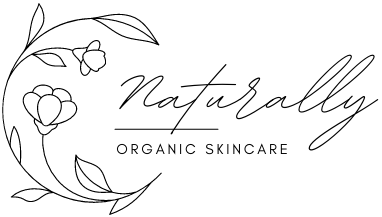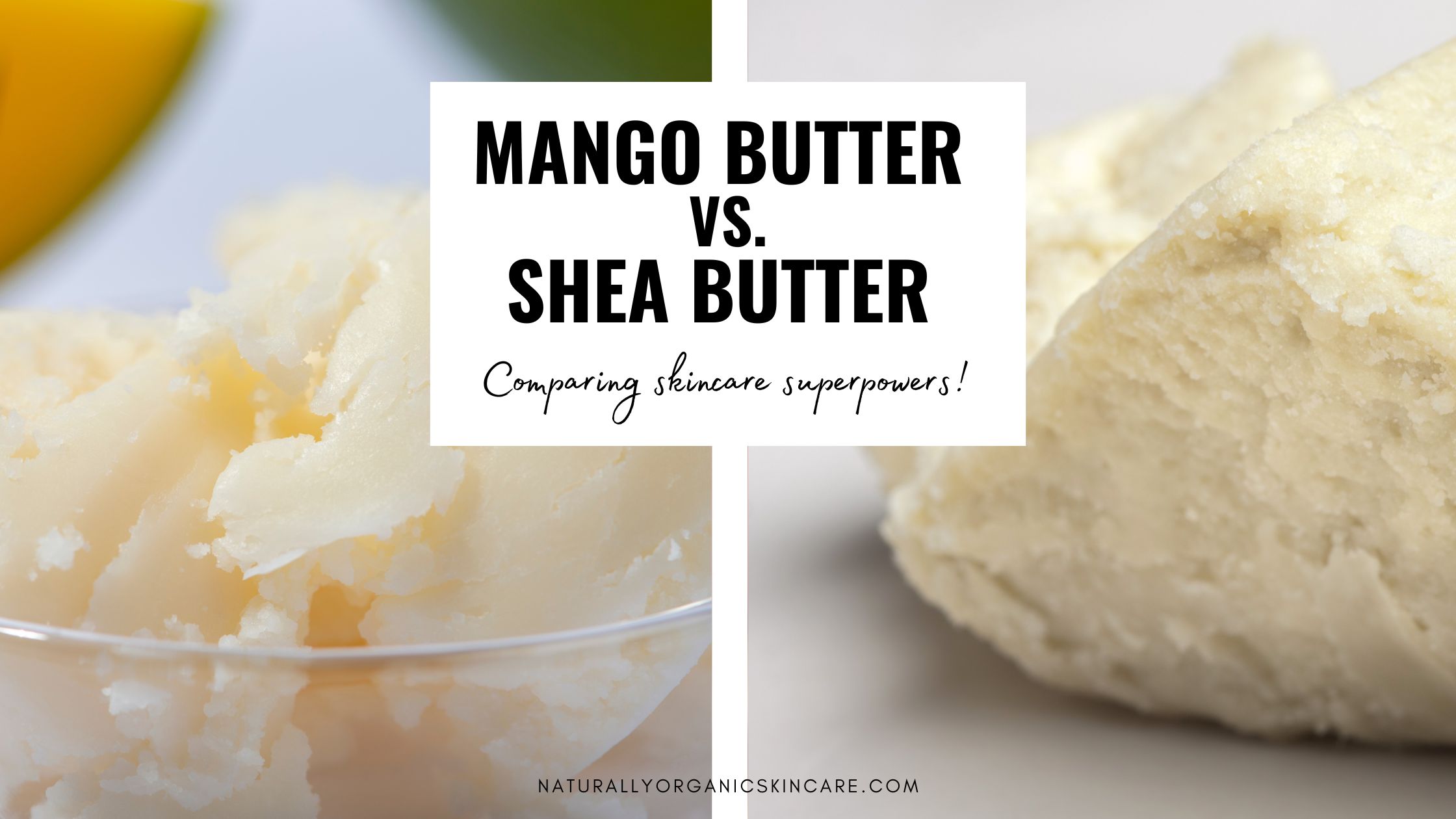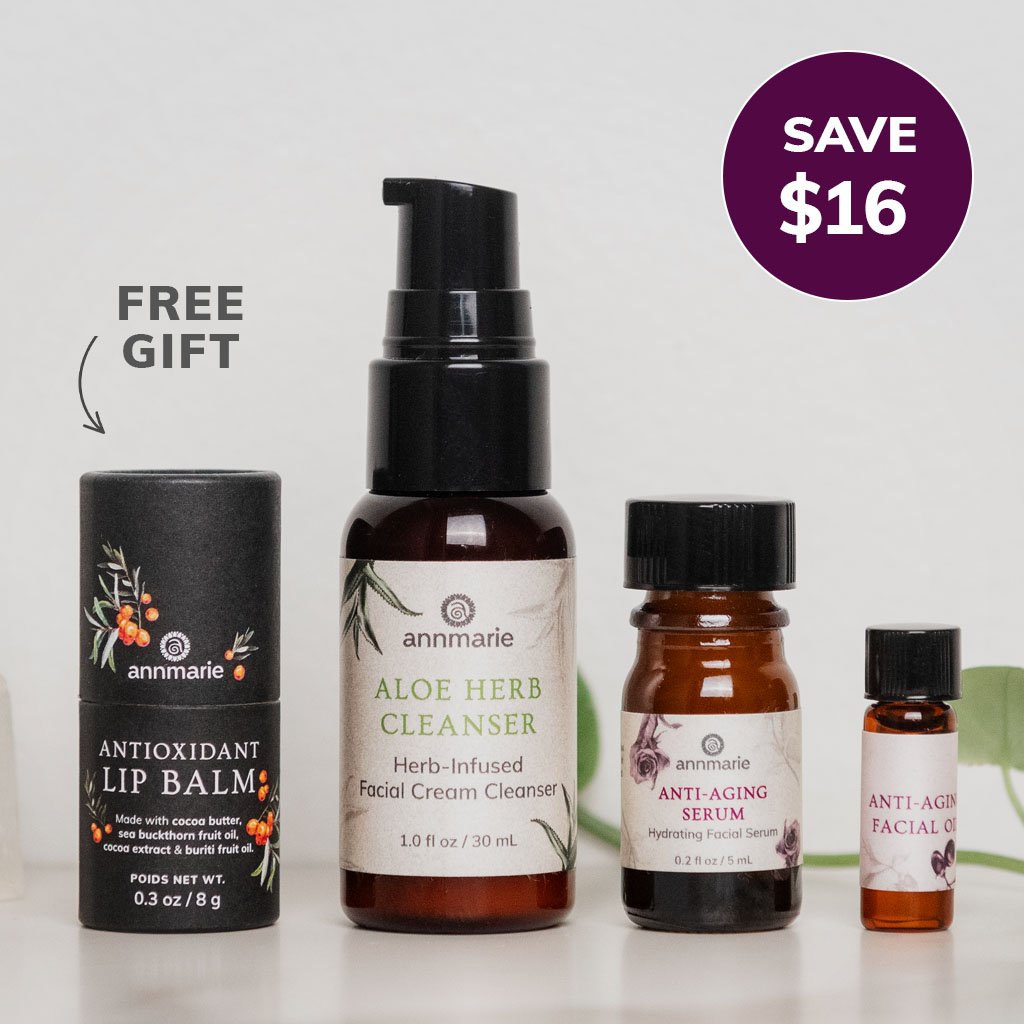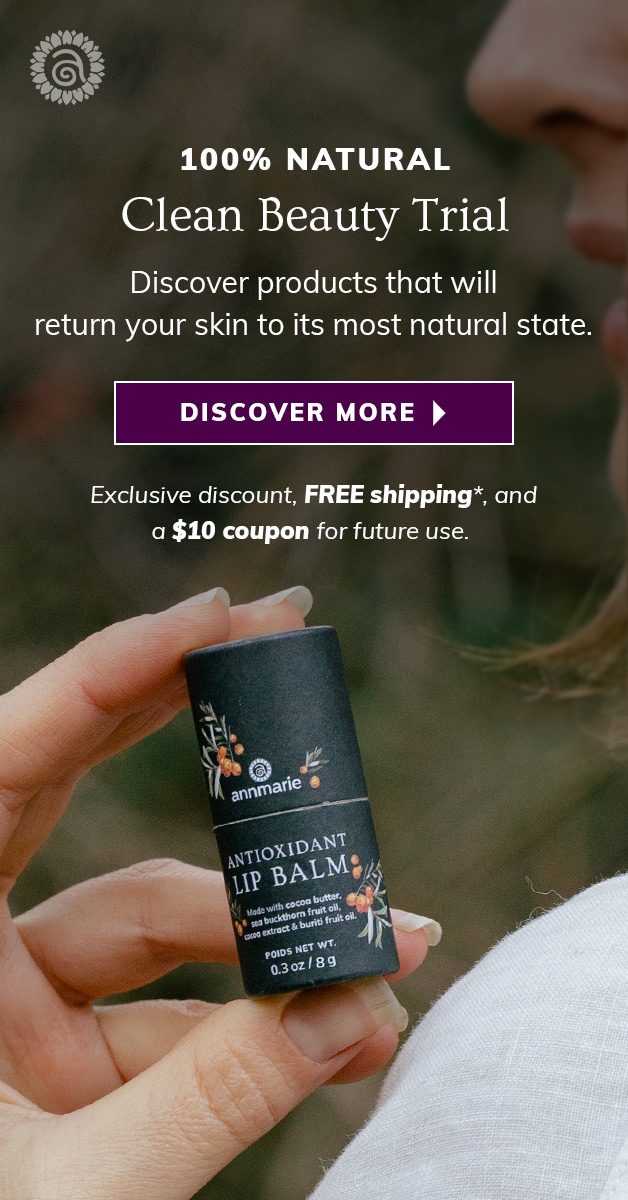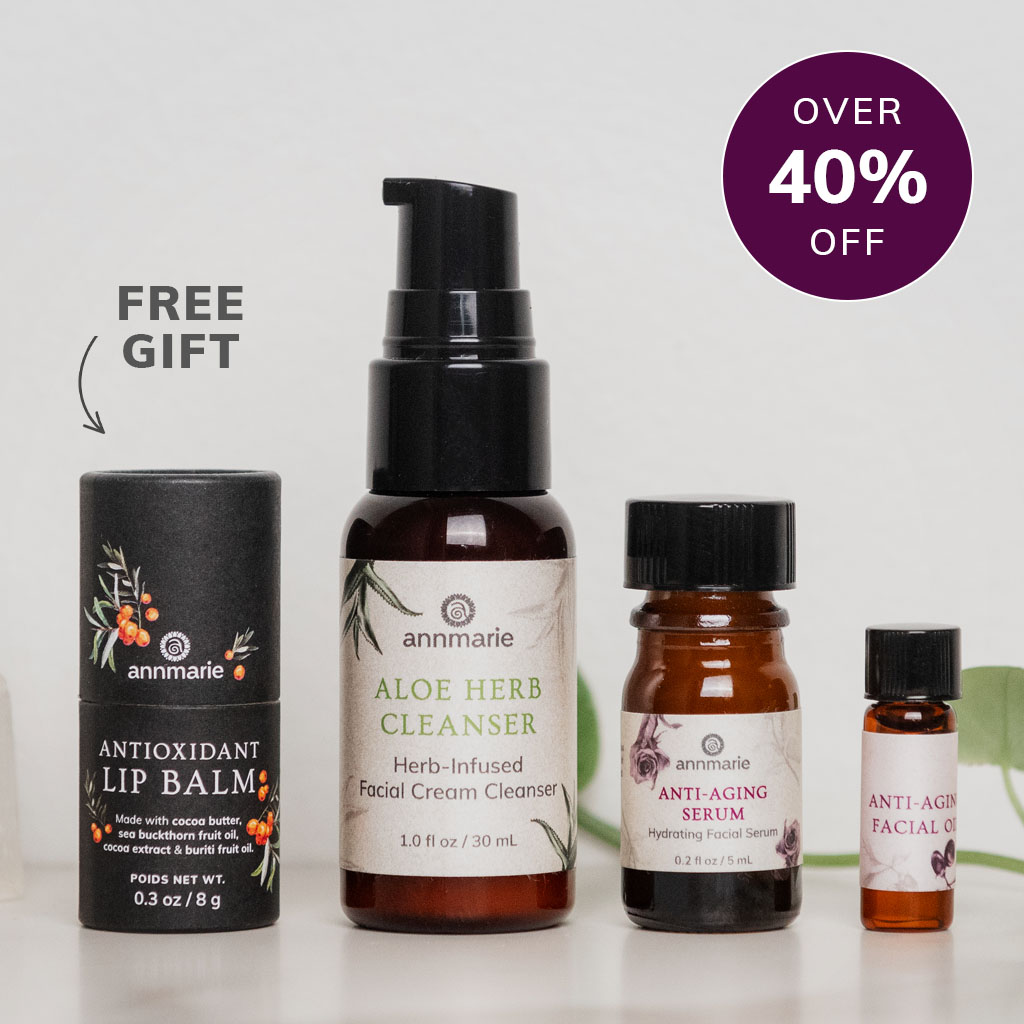So you’d like the inside scoop on Mango butter vs Shea butter? We’ll cover exactly that, and then some. In this article, I’m going over the key differences between these two luscious butters, as well as their similarities.
Not just in an abstract way. Sure, we’ll touch upon their origins, properties, and benefits in theory. However, I’ll also do my best to describe how they look, feel, smell, why they are suited to certain skin types (or not), and what I like most about them.
Table of Contents
- What is Mango Butter?
- What is Shea Butter?
- Mango Butter vs Shea Butter: Differences
- Unrefined vs Refined Shea Butter
- Which is Better for Your Skin?
- Shea & Mango Butter Product Examples
- Body Butter Recipe
- Conclusion
Back when I was eagerly making my own natural skincare recipes, at one point I had a few different types of butter on hand. (Or rather, I stashed them in the fridge.)
- Shea butter
- Mango butter
- Kokum butter
- Cocoa butter
- Murumuru butter
They all made great ingredients for my dabbling in homemade skincare balm, body butter, and lotion bars. The good news is that either one of these plant-based butter options is great as a moisturizer.
Nut butters are similar in that they come in a solid state, and melt upon skin contact. Ever so slightly, or more eagerly – it depends on which one we’re talking about.
What is Mango Butter?
When it comes to natural skincare products, mango butter is a popular ingredient that is known for its moisturizing properties. Mango butter is extracted from the seed kernels of the mango fruit, which is native to South Asia. Here’s what you need to know about mango butter.
Appearance and Texture
Pure mango butter has a creamy texture that is softer than shea and cocoa butter at room temperature, but still solid. It has an off-white color and a very subtle natural scent. When applied to the skin, it melts easily and absorbs quickly.
Where Does Mango Butter Come From?
Mango butter is extracted from the mango seeds. That’s right, we’re quick to toss out the large center of mango fruit, without realizing the seeds of the mango are useful in their own way!
Of course, while mango butter benefits the skin, you can’t exactly squeeze it out of that kernel right there, in your own kitchen.
The seeds are removed from the fruit, washed, and sun-dried. Then, the outer husk is removed, and the inner kernel is collected. The kernel is then cold-pressed to extract the mango seed butter.
Properties and Benefits
Mango butter is rich in oleic and stearic acids, which are essential fatty acids that help to nourish and moisturize the skin. It also contains vitamins A, C, and E, which are antioxidants that help to protect the skin from damage caused by free radicals. Mango butter is more nutrient-dense than shea butter, so its antioxidant content and fatty acid profile make it a richer and more potent moisturizer.
Mango butter is a great ingredient for skin care. It is moisturizing and can help ease dry skin conditions. It may also help slow down the degeneration of skin cells, making it a good choice for anti-aging products. Mango butter can also be used to moisturize hair and scalp, making it a popular ingredient in hair care products.
Mango butter is gentle and non-irritating, making it suitable for sensitive skin. It is also believed to have anti-inflammatory properties, which may help to soothe skin conditions such as eczema and psoriasis. Additionally, mango butter is known to help reduce the appearance of fine lines, stretch marks and improve skin elasticity.
Mango butter has a shelf life of around 1-2 years if stored properly in a cool, dry place. It is important to note that mango butter should not be exposed to high temperatures or direct sunlight, as this can cause it to spoil.
What is Shea Butter?
Shea butter is a fat extracted from the nuts of the shea tree. It’s a popular ingredient in many skincare products, including body butter, lotions, and certain hair products.
When scouring the beauty aisle in any department store, Shea butter is probably one of the most likely natural ingredients you’ll notice in the spotlight on product packaging and labels. Not to mention the well-known brand Shea Moisture, which has literally taken its name!
Appearance and Texture
Shea butter has a creamy texture and is solid at room temperature. It’s available in white or yellow color, depending on the level of processing. Unrefined shea butter is usually yellow, while refined shea butter is white.
Where Does Shea Butter Come From?
Shea butter is extracted from the nuts of shea trees, which are native to West Africa. The nuts are harvested, dried, and then crushed to extract the fat. The fat is then boiled to remove any impurities and to make it safe for use.
Properties and Benefits
Shea butter is rich in vitamins A, E, and F, as well as fatty acids and it has antioxidant properties. It’s a natural moisturizer that can help to soothe and hydrate dry skin. Shea butter is also non-comedogenic, which means it won’t clog your pores and cause acne.
Shea butter has anti-inflammatory properties that can help to reduce redness and swelling. It can also help to soften and smooth damaged skin, making it a popular ingredient in anti-aging products. Shea butter can help to boost collagen production, which can help to reduce the appearance of wrinkles and other signs of aging.
Shea butter has a natural SPF of around 6, which can help to protect your skin from UV rays. However, it’s important to note that shea butter should not be used as a substitute for sunscreen. The crucial word here is “help”.
For actual adequate sun protection, do check out natural sunscreen alternatives, where I spill the beans about the very best organic, cruelty-free, non-toxic sunscreen lotions.
Shea butter has a long shelf life and is generally safe for most people to use. Allergies to natural substances are always possible, so it’s important to do a patch test before using it on your skin.
If you’re interested in reading something more scientific, the antimicrobial properties of Shea butter come up in this study, as well as a myriad of other interesting properties.
Mango Butter vs Shea Butter: Differences
Both Shea and Mango butter are known for their moisturizing properties and are commonly used in skincare products. However, there are some notable differences between the two. In this section, we’ll take a closer look at the differences between mango butter and shea butter.
Texture and Consistency
One of the most noticeable differences between mango butter and shea butter is their texture and consistency. Mango butter has a smoother, creamier texture and is easier to spread on the skin. Shea butter, on the other hand, has a thicker, more solid consistency and can be more difficult to spread. This can make shea butter a better option for those with very dry skin, as it provides a more intense level of moisture.
Scent
Another key difference between mango butter and shea butter is their scent. Mango butter has a very subtle, faintly sweet scent that is not overpowering. Shea butter, on the other hand, has a nutty smell that can be quite strong. Some people love the scent of shea butter, while others find it off-putting.
Melting Point
Mango butter and shea butter also have different melting points. This means the butter remains in a solid state below this temperature and becomes liquid above it.
Mango butter has a lower melting point than shea butter, which means that it will melt more easily when it comes into contact with the skin. Shea butter’s melting point is not much higher and it can vary, depending on the brand and origin.
For reference, here is a quick overview comparing the melting points of some of the most used butters.
- The melting point of Shea butter is typically around 32-45°C (89-113°F).
- Kokum butter has a melting point ranging from 34-38°C (93-100°F).
- Mango butter melts at approximately 32-38°C (90-100°F).
- The melting point of cocoa butter is around 30-35°C (86-95°F).
Note that the melting point isn’t the same as a butter’s feel and texture. See how Cocoa butter feels very hard, but it has the lowest melting point?
Uses
Both mango butter and shea butter have a wide range of uses. They can be applied to the skin as moisturizers, and to the hair for their conditioning properties.
Shea butter is commonly used in whipped body butter recipes, while mango butter is less well-known but whips up great too.
While both are excellent options for moisturizing the skin and hair, I’ve always felt drawn to the fine texture of mango butter. It has a stunning ivory color and barely any scent.
Shea butter is a very popular choice and has great antioxidant properties. It has a darker color veering on the yellow-beige, unless it is processed/refined, and a more pronounced nutty odor. This natural fragrance may interfere with the essential oil or fragrance oil in the recipe.
Comedogenic Rating
The fatty acid profile and, as a result, the comedogenic rating of Shea and Mango butter are different. Shea butter scores between 0 and 2, which is low, meaning it won’t clog pores. Mango butter is rated a 2. Very oily or acne-prone skin types might not appreciate that.
Unrefined vs Refined Shea Butter
When it comes to shea butter, there are two main types: unrefined and refined. Unrefined shea butter is the purest form of shea butter, while refined shea butter has undergone some processing. Here are some key differences between the two types.
Appearance and Texture
Unrefined shea butter has a yellowish color and a nutty aroma. It has a soft, creamy texture that melts easily into the skin. Refined shea butter, on the other hand, is usually white and odorless. It has a harder texture than unrefined shea butter, which can make it more difficult to work with. But of course, as usual, when refining a natural product, you win some and you lose some.
Properties and Benefits
Unrefined shea butter is rich in vitamin E and other natural antioxidants, which makes it great for hydrating and nourishing the skin. It’s also known for its ability to make the skin supple and moisturized. Unrefined shea butter is often used in soaps, lotions, and other skincare products.
Refined shea butter has many of the same properties and benefits as unrefined shea butter, but it may not be as potent. Some of the nutrients and antioxidants may be lost during processing. However, refined shea butter is often preferred for its neutral scent and smoother texture.
Overall, both unrefined and refined shea butter have their own unique properties and benefits. It’s up to you to decide which one is right for your skincare needs or lends itself better to the skincare recipes you’re crafting.
Which is Better for Your Skin?
When it comes to choosing between mango butter and shea butter, it can be difficult to decide which one is better for your skin. Both of these natural butters can help improve the health and appearance of your skin. In this section, we will explore the different aspects of mango butter and shea butter and which one is better suited for your skin.
Skin Type
Your skin type plays a crucial role in determining which butter is better for you.
While mango butter is softer than shea and cocoa butter, it often contains more oleic acids making it a more intense moisturizer. It has little to no odor and is rich in vitamins, minerals, and antioxidants, so it helps ease dry skin conditions and slows down the degeneration of skin cells.
Shea butter is lighter in texture, and therefore it’s better suited to oilier skin types than mango butter. It can prevent the build-up of oil in the skin by balancing the production of sebum, resulting in less blocked pores and acne breakouts in general.
Mango butter tends to be a better moisturizer for dry and sensitive skin. You can try to use it on acne-prone skin and see how your skin responds, though in that case, it’s perhaps not the most suited natural ingredient for face care. Shea butter, on the other hand, could be a better choice for oily, blemish-prone skin, especially its unrefined version. So, if you have dry, normal, or sensitive skin, mango butter may be a better option for you, while if you have oily skin, shea butter may be a better option.
Even if you find neither of these butters suits the skin type on your face, you can indulge in using butters on your body! Most people’s hands, feet, arms, and legs will enjoy the extra nourishment – I know mine do!
Moisturizing
Both mango butter and shea butter are excellent moisturizers for the skin. They have a semi-solid, creamy texture that is easy to apply and absorbs quickly into the skin.
Mango butter is rich in oleic acid and stearic acid, which help to hydrate and soften the skin. Shea butter, on the other hand, is rich in vitamins A and E, which help to nourish and moisturize the skin. So, if you are looking for moisturizing butter, both mango butter and shea butter are great options.
Antioxidant and Anti-Inflammatory Properties
Mango butter is packed with nutrients like vitamin C, which helps to protect the skin from free radical damage and reduce inflammation. Shea butter also has antioxidant and anti-inflammatory properties, which help to soothe and protect the skin.
Protection from Sun Damage
Mango butter is rich in vitamins A and C, which help to protect the skin from UV rays and sun damage. Shea butter also has some sun protection properties, however, neither of these butters is a replacement for actual sunscreen lotion to prevent sunburn.
Preventing sunburn is one of the best things you can do for your skin to prevent premature aging and cancer. My favorite natural sunscreen products for the face, the body, for my kids, for days of city dwelling, and for roughing it outdoors are all here.
Soothe Skin Conditions
Both mango butter and shea butter are known for their ability to soothe and heal skin conditions like eczema, psoriasis, and sunburn. They help to reduce inflammation and irritation, and their hydrating properties help to keep the skin moisturized and supple. So, if you are looking for a natural remedy to soothe and heal your skin, both mango butter and shea butter are great options. A small amount goes a long way!
Raw shea butter has a higher concentration of nutrients than the refined version, which undergoes a deodorizing and bleaching process. For maximum skin soothing benefits, it may be worth using raw Shea butter, as long as you don’t mind the more rugged texture and typical scent. Rich in oleic, stearic, and linoleic acid, Shea butter deeply moisturizes the skin and enhances its natural protective barrier. With its rich vitamin content, including vitamins A, E, and F, raw shea butter nourishes and repairs the skin, promoting a healthy and radiant complexion.
You’ll notice how there is some overlap with the benefits of mango butter.
The latter contains fatty acids like oleic acid, stearic acid, and palmitic acid, mango butter effectively moisturizes and softens the skin, making it especially suitable for dry or dehydrated skin types.
The presence of vitamins A and C in mango butter contributes to its antioxidant properties, protecting the skin from environmental stressors and stimulating collagen production for improved skin elasticity. Its lightweight texture allows for quick absorption without leaving a greasy residue, leaving the skin feeling refreshed, rejuvenated, and radiantly smooth.
Both refined and raw shea butter as well as mango butter provide unique benefits to different skin types. While shea butter excels in deeply moisturizing and nourishing the skin, mango butter’s lightweight yet hydrating properties make it a great choice for those with dry, dehydrated, or mature skin. Incorporating these different butters into your skincare routine can lead to a healthier, more radiant skin.
Latex Allergy
There is one thing to be aware of: Because the shea tree can contain natural latex, it may trigger a reaction in people with a latex allergy. If you’ve experienced skin irritation from being exposed to latex, definitely be extra careful with Shea butter. The same goes for mango butter.
Some people with latex allergy have allergic reactions when eating particular foods, including bananas, avocados, chestnuts, kiwifruit, mango, passionfruit, fig, strawberry, papaya, apple, melon, celery, potato, tomato, carrot, and soy.
This is because some of the proteins in latex that cause latex allergy are also present in these fruits and it is known as the latex-fruit syndrome.
Natural products have a reputation for being better, as in healthier for us. While, from my experience, this is true (my skin responded so much better to all-natural care than to regular products), it does not account for personal allergic reactions on a case-by-case basis. Those are no joke and can be serious, as anyone with a peanut allergy will tell you.
Shea & Mango Butter Product Examples
There are many Shea butter products and also some Mango butter skincare products.
Body Butter Recipe
An article comparing shea butter and mango butter would not be complete without at least one recipe. Neither of these butters is all that easy to use straight out of the jar/tub. To make them more easily applicable and spreadable, you can make creamy butter by blending Shea, mango, or some of both butters with a carrier oil. It’s as simple as boiling an egg or making pasta.
Please note that these ratios are ballpark. If you find the result too stiff (or not enough), simply re-melt it and add a little oil or butter.
Which Carrier Oil To Choose
Jojoba oil is excellent for almost all skin types and should work well on the body as well as the face.
Sweet Almond oil is richer oil that is very gentle and best for dry, blemish-free skin.
Coconut oil is very popular, widely available, and affordable but it has a higher chance of clogging pores and for this reason, I only use it in homemade deodorant recipes. Definitely not for face care.
There are too many oils to choose from to list here! If you’re deciding what to use, check out these comparisons for guidance:
Argan Oil vs Coconut Oil For Skin & Hair Care
Argan Oil vs Jojoba Oil: Which One is Best for Skin & Hair?
Rosehip Oil Vs Jojoba Oil: Which Is Best For Skin Type & Hair?
Ingredients:
- 1/2 cup Shea butter
- 1/4 cup Mango butter (alternatively, use cocoa butter or coconut oil)
- 1/4 cup Sweet almond oil or Jojoba oil
- Optional: 10-15 drops of your preferred essential oil
Instructions:
- Melt the butters in a double boiler. That’s a fancy way of saying you put them in a bowl, which then gets positioned in a larger bowl with hot water, so they melt slowly.
- Once melted, add the oil and the optional essential oil drops. Stir well to combine.
- Place the bowl in the refrigerator to cool for about a half hour or until the mixture has partially solidified. It should be firm but still soft enough for whipping.
- Using a hand mixer or stand mixer, whip the partially solidified mixture until it becomes light and fluffy. This process may take a few minutes.
- Once whipped to your desired consistency, transfer the body butter into a clean, airtight jar or container.
- Store the body butter in a cool, dry place. It should keep well for several months.
To use, simply take a small amount of the body butter and apply it to your skin. Massage gently until absorbed, and enjoy the nourishing and moisturizing benefits of the shea butter and mango butter.
Conclusion
In summary, both mango butter and shea butter have unique benefits for the skin and hair. Choosing between the two depends on your personal preference and the specific needs of your skin.
Refined Shea butter is slightly less nutrient-dense than raw shea butter, making up for it with a smoother texture and no smell. Both are rich and potent moisturizers, ideal for those with dry skin or hair.
Mango butter is a tad lighter in texture and absorbs into the skin faster. To highlight another key difference, Mango butter contains high concentrations of Vitamin C, which research shows stimulates the production of collagen.
When it comes to the price point, mango butter is slightly more expensive than shea butter. Shea butter also whips up to make a larger quantity than mango butter, FYI.
In conclusion, both mango butter and shea butter are excellent natural ingredients that can benefit your skin and hair. Both contain an abundance of vitamin E and many essential nutrients for skin health.
Shea butter, being more widely available, is often the one you’ll notice in commercial skincare products such as lip balms and body lotion.
For at-home use, the smooth, creamy texture of mango butter definitely makes me feel just a tad more luxurious and it doesn’t hurt that mango butter absorbs into the skin more easily.
We all want those benefits of rich and nutritive substances but “I like to walk around looking shiny and observing the world from under a greasy layer” said no one ever, ha!
And on that note, it is up to you to decide between Shea butter vs Mango butter. Which is most suited to incorporate into your skincare routine? Maybe you’ll have to try both… and your skin will be all the more radiant for it.
